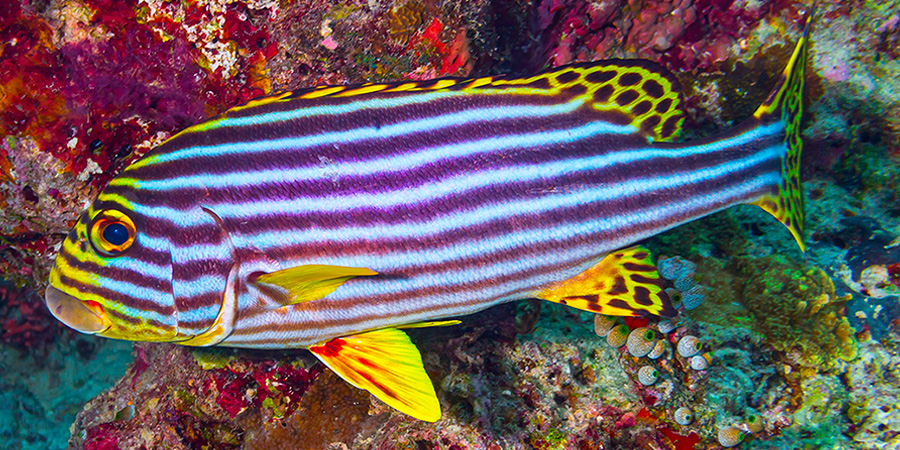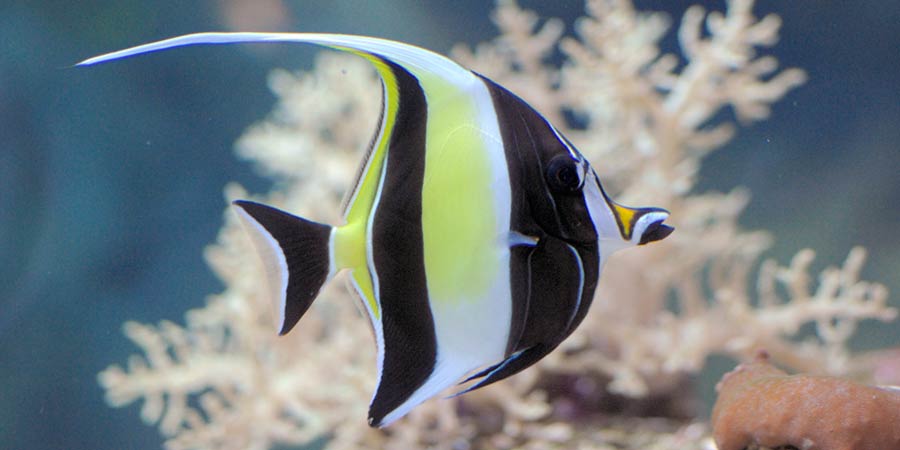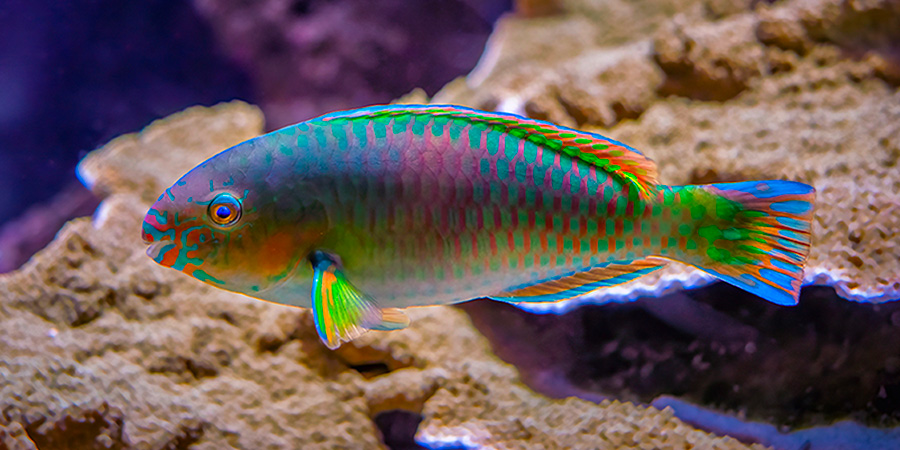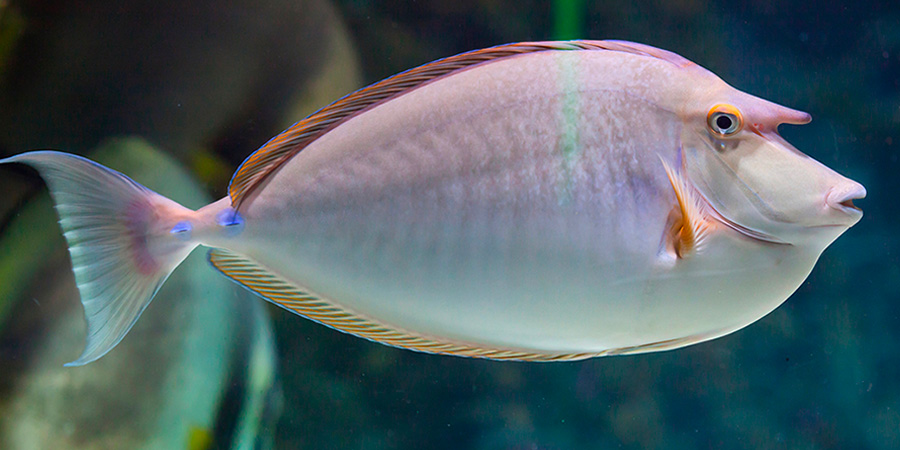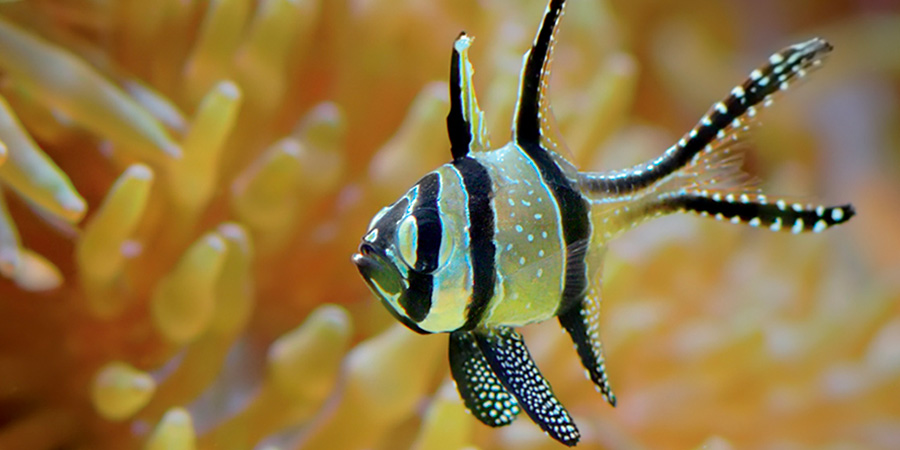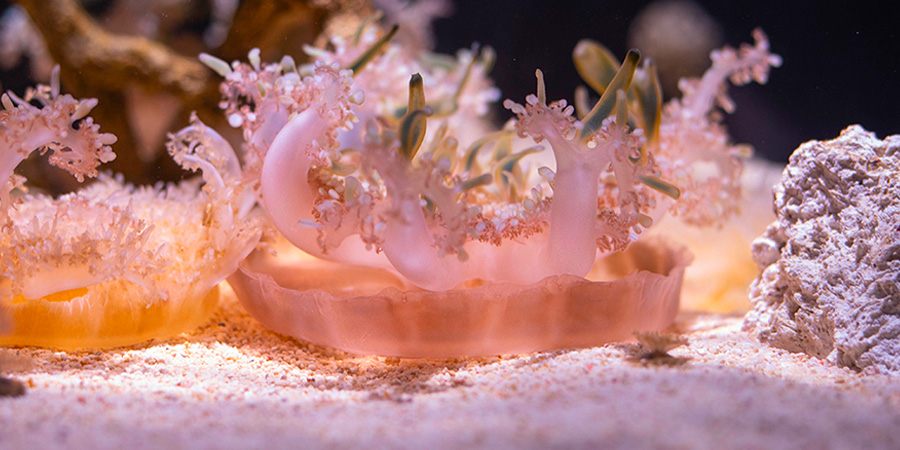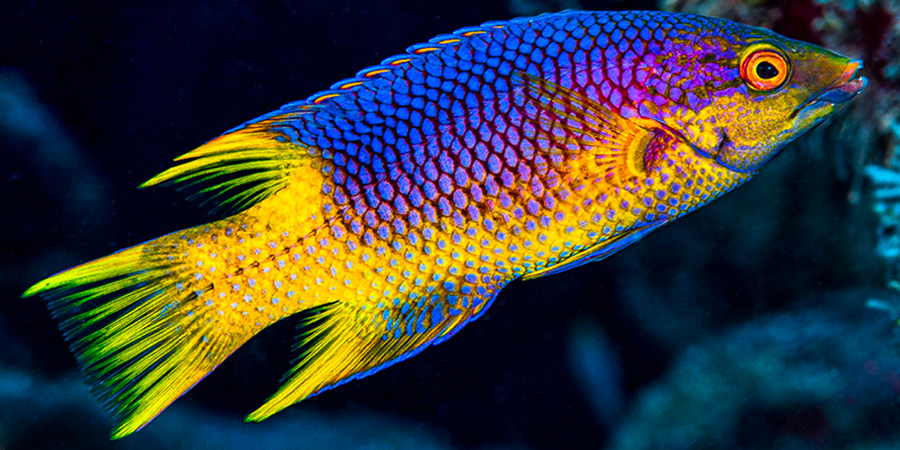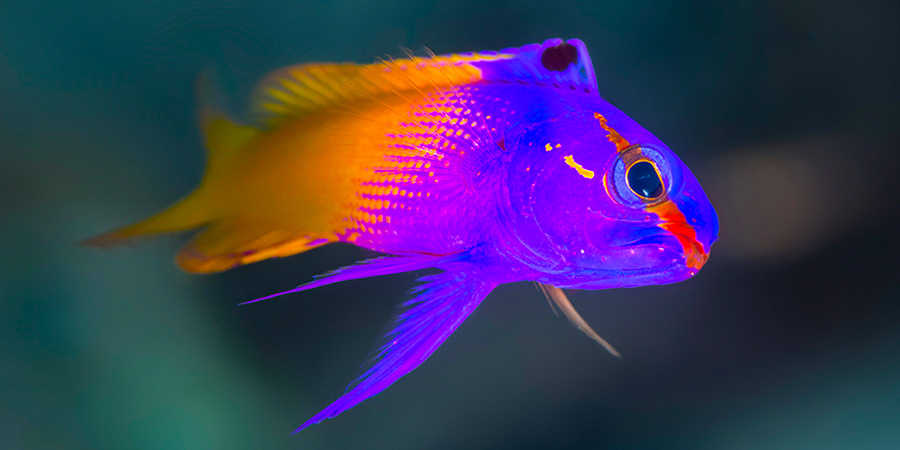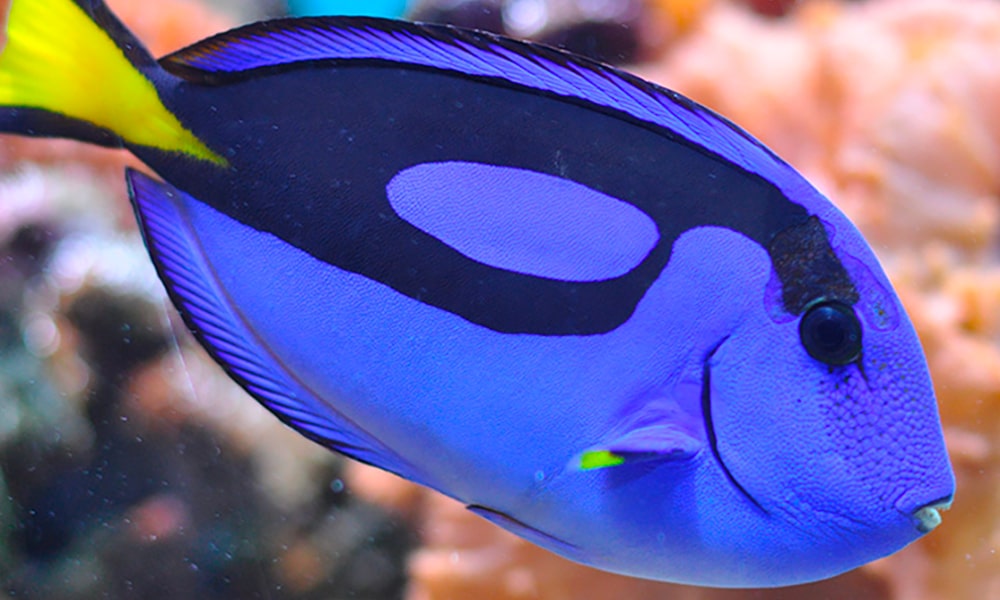
Scientific name : Paracanthurus hepatus
Family : Acanthuridae
Size : Up to 20 cm
Distribution : Indo-Pacific
Biology : It is called “palette” because its livery is reminiscent of a painter’s palette.
Like all surgeon fish, it has a spine at the base of its tail. This is similar to the scalpel used by surgeons, hence the name. This spine is an effective means of defence.

